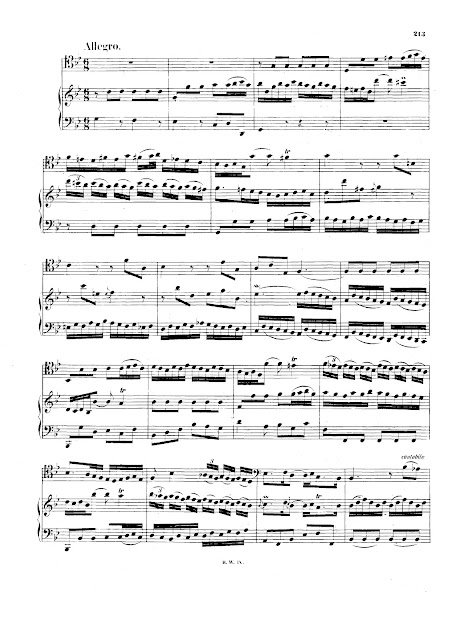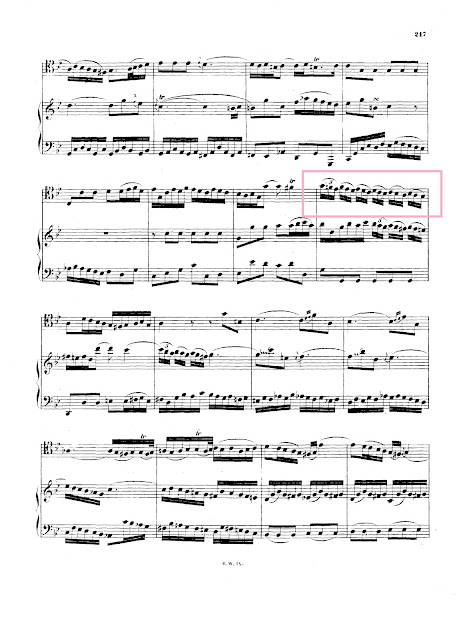CCCXLVIII. BACH, J.S. (1685-1750)
The girl practices on the virginal, while the teacher lets his gamba rest on the floor.
**
The Viola da Gamba is a member of the viol family. The gamba -- which has outlived the Haydn-era baryton [see Post CXCII, et seq.]) is played between the legs, like a cello (gamba = legs).
The Viola d'amore is played under the chin, like a modern day violin or viola. It is often referred to as a viol, but the distinction is semantic.
Although Bach wrote for the d'amore in several cantatas, he never wrote a solo sonata for the instrument, as he did in this case for the gamba -- three of 'em (BWV 1027-1029).
It is probably because when he was Thomaskantor in Leipzig in the 1720s, he knew a virtuoso on the instrument -- Christian Ferdinand Abel.
**
This is a truly superb performance, by Mr. Jantzen and Ms. Fábri!
First Movement
First Movement
Typically Bachian, the theme is a simple arpeggio with passing tones, played by the gamba and then reinforced in the lower harpsichord part a few bars later ...
He introduces two 32nd-notes here which will become more prominent on the next page:
Very cool when he goes full unison:
Second Movement
A stately 3/2 Adagio in B-Flat Major, with stunning interplay between the two instruments -- featuring modulations to F, C and G Minor:
Third Movement
A raging polyphonic 6/8 Gigue-type dance movement.
Note the bars of pedal tones:
and the introduction of ultra-fast 16th-note triplets:














No comments:
Post a Comment